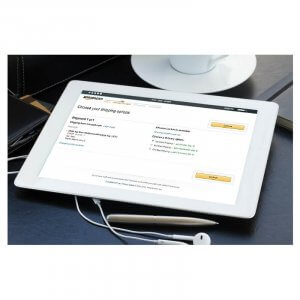At the end of February, non-prime customers looking to get free shipping on their purchases discovered that Amazon “quietly” raised the minimum order value from $35 to $49 (exclusive of books, where it’s still $25). While Amazon’s reasons are clear – to encourage customers to get Prime, and limit some of the losses they incur with free shipping – here at SellerEngine, we’re looking for ways Amazon sellers can profit from it.
However large your Fulfilled by Merchant (FBM) inventory, read on to find out more.
When competing against FBA offers, a common repricing strategy among FBM 3rd party sellers is to undercut the FBA price. That’s because:
- FBA offers have an advantage over FBM in terms of Buy Box eligibility. So, FBM sellers must compensate for this by offering a better price.
- FBA offers come with free shipping. So, even if you can’t offer this on your FBM items, your price still has to be lower to offset the difference in landed price (we’ll use this to refer to the total cost of the product, including manufacturing, transportation, import duties, warehousing costs, etc.).
This all makes sense if the seller’s targeting Prime shoppers, who tend to spend significantly more than their non-prime counterparts on Amazon…
…but should you be targeting Prime shoppers if you’re FBM? No, that’s not an absurd question. Knowing your customer is essential in trading. If you’re FBM, trying to target a customer when you’ve been put at a disadvantage relative to the competition means you’re bound to lower your margins. Why should you be doing that, when there is a valuable customer niche – albeit a small one – for whom those disadvantages are reversed?
We’re talking, of course, about the non-prime shoppers whose limit for getting free shipping has just been bumped up by 40%. Keep in mind that, as we discussed in a previous post, 80+% of all products on Amazon.com are below $35.
For a non-prime shopper, the landed price of an FBA offer is roughly $5 higher than shown, due to the shipping cost added at checkout. This means that an FBM seller with free shipping can afford a price up to $5 higher than Amazon’s, and still be competitive. So, you’d add over 10% to your margin on the more expensive items, and even double that rate for the cheapest ones.
This applies even to books, because while Amazon may force 3rd party merchants to charge $3.99 standard shipping on books, they themselves actually charge $4.98 if you don’t qualify for free super saver shipping. That number might be different, depending on the shopper’s location and other criteria. It’s actually impossible to find a rate table for books bought from Amazon; you only know what your shipping costs is at checkout.
Here’s what the checkout page would look like to a non-prime shopper on a $32.95 item if they chose Amazon, and then if they chose an FBM seller:
Fig. 1. Non-Prime member’s checkout page
For Sellery users, it’s easy to implement this new margin raising strategy. Here’s what the pricing rule could look like:
- Create a smart list using these conditions: “FBA is false” and “lowest FBA price is less than $49” (…or less than $25 for books).
- Create a pricing rule. Under “competition filters”, filter out offers that are worse than yours, such as worse condition, bad feedback, and Amazon out of stock offers, etc.
- In the “Pricing Strategy” tab, set the competition price as “lowest price in any condition that is FBA”, and “set the competition price” to be higher than your competitors’ by $4.50 or even $5.00 (allow for FBA shipping costs by adjusting this price).
- Add two special scenarios as exceptions to this situation, as seen in the examples below.
Exception 1: To catch FBA offers not returned by Amazon, try this exception: “always set an upper limit of $5.00 above lowest FBA price after filtering”.
Exception 2: To keep your price competitive relative to other FBM sellers with similar tactics, try: “always set an upper limit to $0* above lowest MFN (FBM) price after filtering’’.
*value used for reference only
Match the smart list to this pricing rule in the pricing overview, set a margin or a markup at leisure, and let us know how it works. Your sales velocity may taper off a little, but the extra profit should make up for it.
Will this impact my chances of winning the Buy Box?
Yes and no. Here is some very important information from Amazon’s technical documentation on Buy Box ownership:
Fig. 2 Amazon Policy on Simultaneous Buy-Box Eligibility for Prime and Other Sellers
Essentially, Amazon claims that there can be up to two Buy Box winners at the same time, which makes sense; FBA offers are far better for Prime customers, but that advantage no longer holds when dealing with a non-prime shopper.
So yes, you will lose the “main” (prime) Buy Box and, as mentioned above, sales will slow down, but the extra profit should make up for it. This strategy is based on the principle that, in some cases, it’s better to give up high sales volume with low margins in favor of lower sales but with higher prices.
Some non-prime shoppers may be very disappointed to find at checkout that they need to pay for Amazon to ship items that would have been delivered for free up until recently. So, although your Buy Box ownership % will go down, these customers will likely return to the offers page time and again, and find a better deal – yours.
Emin follows the latest trends and breakthroughs in online selling, looking for the impact they may have on online merchants, including 3rd-party Amazon sellers.
At SellerEngine, he is Product Owner for Sellery, the premier repricing software for Amazon sellers. He makes sure that the needs of Amazon sellers are reflected in SellerEngine’s software.
